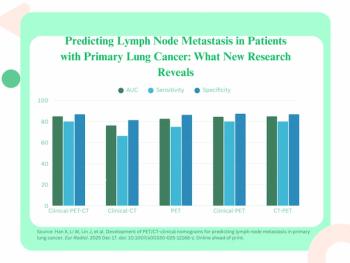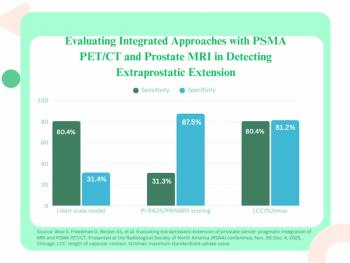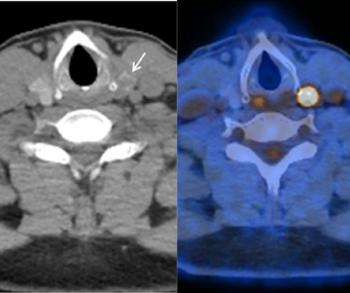
Agfa clinches final U.K. PACS contract
The last contractual hole in the mass deployment of PACS to English hospitals has been plugged. Agfa-Gevaert has been selected as sole PACS supplier for public hospitals in the North-East and Eastern regions of England. Radiologists at the 75 hospitals covered by the agreement, however, are still waiting to hear who might provide a new RIS.
The last contractual hole in the mass deployment of PACS to English hospitals has been plugged. Agfa-Gevaert has been selected as sole PACS supplier for public hospitals in the North-East and Eastern regions of England. Radiologists at the 75 hospitals covered by the agreement, however, are still waiting to hear who might provide a new RIS.
The rollout of digital imaging services across England is part of an ambitious plan to bring e-healthcare to all English hospitals, clinics, and GP surgeries. Delivery of IT systems to 150 public healthcare Trusts is being coordinated within five designated regions (known as clusters) by four designated local service providers (LSPs). The bulk-buying power of each LSP is expected to yield substantial savings in capital outlay, although details of all individual contracts remain shrouded in cloaks of commercial secrecy.
Contracts to deliver PACS to three of the five regions were signed months ago, freeing hospitals in the Southern, North-West and West Midlands, and London clusters to start discussions with designated suppliers. Meanwhile, steps to find a PACS provider to cover the North-East and Eastern regions ground to a halt in December owing to legal wrangles over the tendering procedure.
All legal obstacles holding up the contracting process in the North-East and Eastern clusters have now been removed, according to Connecting for Health, the Department of Health agency charged with delivering the IT program. Accenture, the LSP responsible for IT provision within these two clusters, has duly completed its negotiations and subcontracted Agfa to serve its digital radiology imaging management needs.
"The contracting process has been long and complex," said Barry Stone, U.K. managing director for Agfa's HealthCare business group. "We can't say why we were chosen, but we like to think it is because we have a demonstrated capability to make very effective entity-wide PACS deployments, not just in Europe, but specifically in the U.K."
The final signing of this contract marks the end of 18 months of uncertainty, rumor, and frustration. GE Healthcare was initially named as the winner of these two PACS tenders in May 2004. Speculation then began that Agfa, which had been frozen out of all five regions, would be taking the North-East and Eastern clusters after all. Then a rival PACS bidder, Fuji, launched a legal effort to hold a High Court review of the entire procurement process. Radiologists in the regions affected by the impasse were left without an officially sanctioned PACS provider and no idea of when one would be appointed.
Richard Granger, head of IT within the U.K. National Health Service, noted that while the resulting delay to the contractual process had been disappointing, he was delighted with the judge's ruling that the procurement process had been correct and of high quality.
"We have completed the contractual jigsaw (puzzle), and I look forward to driving implementation so that PACS becomes ubiquitous in English hospitals and the benefits are made real," he said.
Fuji is providing no comment to reports that its challenge to the procurement process in the courts has failed.
But while Connecting for Health has proclaimed that its puzzle of vendors and services is now complete, radiologists may not be so sure. An early announcement that U.K.-based Healthcare Software Systems would supply its RIS to hospitals in the North-East and Eastern clusters has been retracted. A spokesperson for Accenture confirmed that a RIS contract had not been signed.
Unlike PACS, RIS has never been regarded as a "core" part of England's healthcare IT rollout. While approximately one-third of capital costs for each PACS deployment is coming from a central government fund, no such monies are available for hospitals seeking a new or improved RIS. Yet measures are being taken to promote PACS/RIS connectivity in all hospitals receiving a centrally procured PACS, according to Max Jones, Connecting for Health's PACS program head.
"Where existing RIS cannot be upgraded, we have been endeavoring to put in place contracts that will provide a RIS solution," he said. "For certain clusters, those negotiations led to almost clusterwide RIS contracts, while for other clusters, they have led to a relatively small-scale RIS element. We are still in the process of negotiating the situation in the North-East and Eastern clusters with Accenture."
Two healthcare Trusts in London, and two in the Southern cluster have now gone live with a centrally procured PACS. At least one of the four is also running a RIS delivered by its LSP, Jones said. Links between the new PACS and a preexisting RIS are believed to be operating at the other three sites.
Despite the contractual hiccups, Connecting for Health remains confident it will meet its March 31, 2007, target of 100% PACS deployment at all English hospital Trusts seeking digital imaging provision. Specific details of any implementation timetable are staying under wraps, however.
"We do have an ever-increasing number of sites going live every month and look forward to quite an active rollout later this year," Jones said.
Agfa is similarly undaunted by the prospect of meeting the March 2007 deadline, regardless of the time it has taken to sign on the dotted line. The company took steps to ready itself for full PACS deployment while negotiations with Accenture were on ice. Timely fulfillment will also depend on site-specific commercial and technical issues that are outside of Agfa's control, Stone said.
"Contractually, we have the same kind of obligations as everyone else. We're not looking for any specific extensions," he said. "We are prepared. But we have the credentials and deployment capability to be at that point anyway."
Newsletter
Stay at the forefront of radiology with the Diagnostic Imaging newsletter, delivering the latest news, clinical insights, and imaging advancements for today’s radiologists.



























